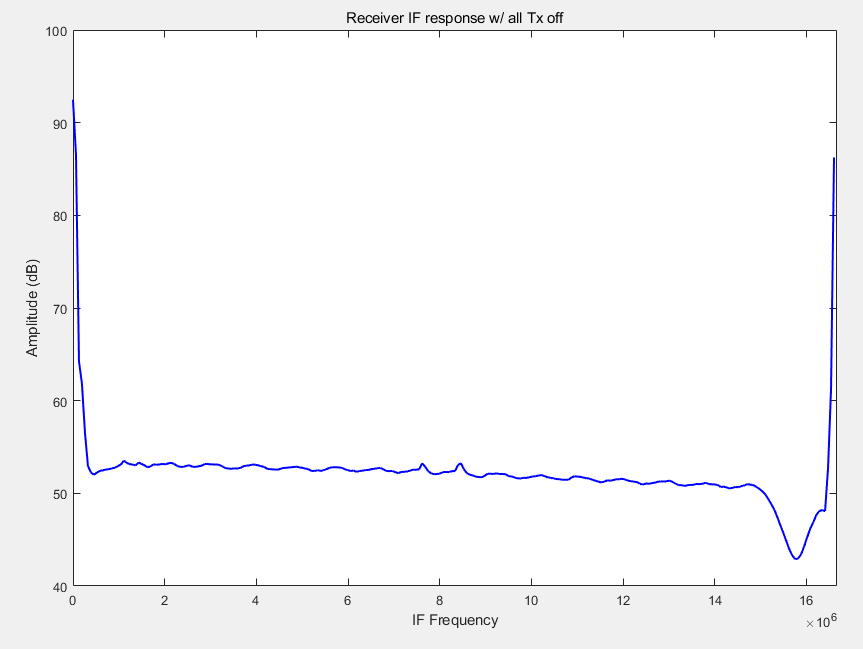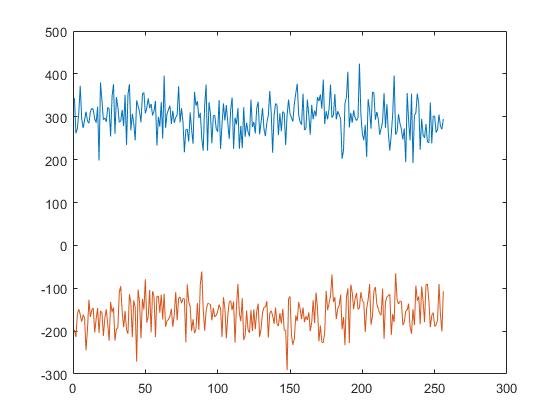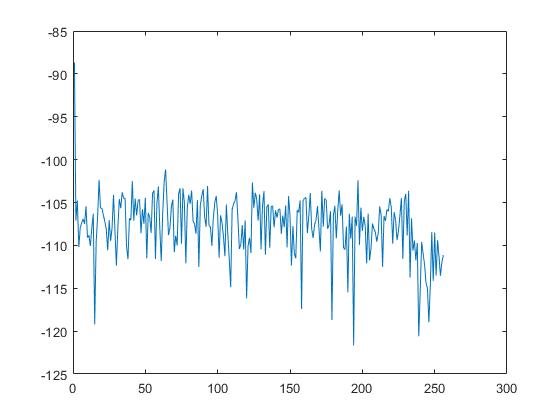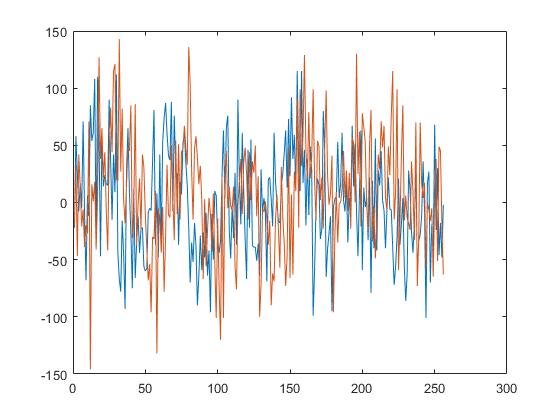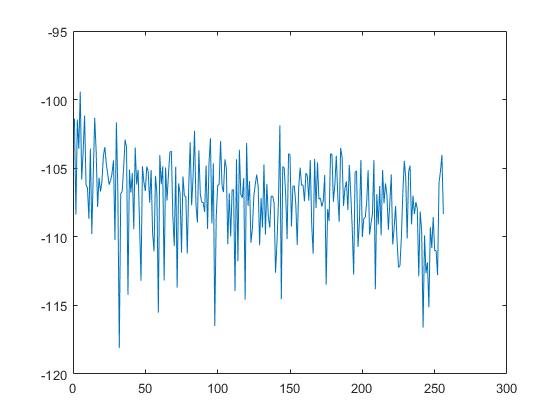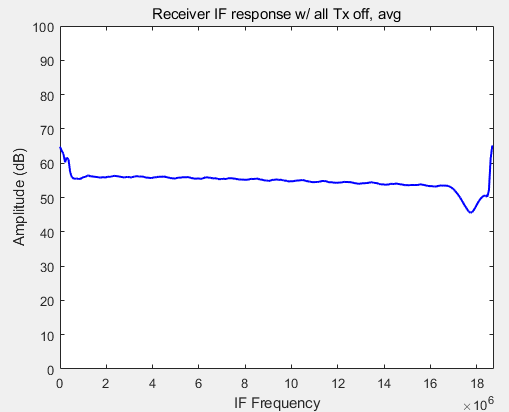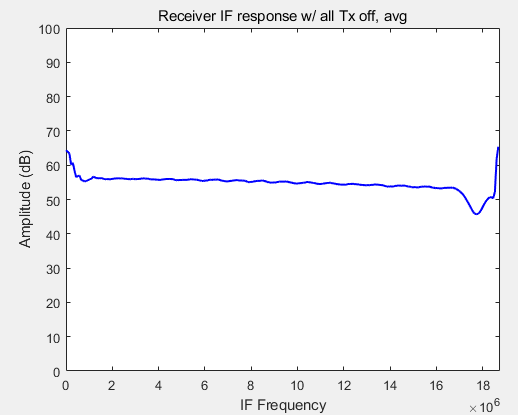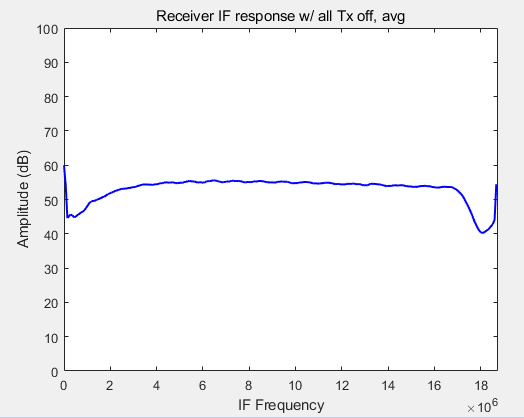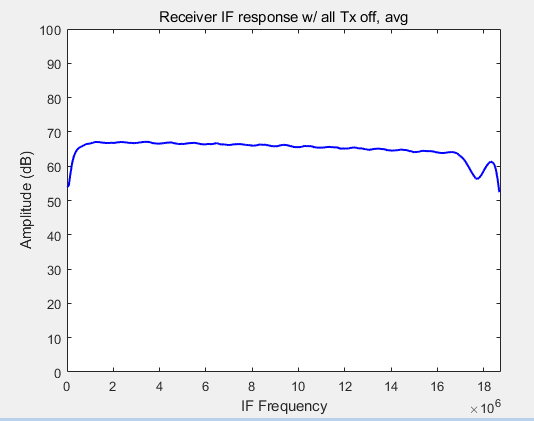Tool/software: TI-RTOS
Dear Experts,
The system that I'm working on is an AWR1243 ES2.0 with 4chip cascaded radar.
Until now, I just thought the high reflected power from very close range cells are tx-rx leakage of the system or reflection from radar covers.
Recently, I saw other thread that shows desired IF response of AWR1243, when all txs are not working.
(https://e2e.ti.com/support/sensors/f/1023/p/663579/2446259)
So I tried same thing with my system, and the result is quite different in terms of DC component.
The below result is obtained by raw data streaming and processed in MATLAB with simple FFT and averaging over different antenna channels (total 128).
What can be a root of this problem?
The environment is Processor SDK RADAR 3.4.0 with minor modifications.
The chirp related parameters are:
#define CHAINS_CASCADE_RADAR_SAMPLING_RATE_KSPS (16666U)
#define CHAINS_CASCADE_RADAR_ADC_START_TIME_IN_US (6U)
#define CHAINS_CASCADE_RADAR_IDLE_TIME_IN_US (7U)
#define CHAINS_CASCADE_RADAR_RAMP_END_TIME_IN_US (38U)
#define CHAINS_CASCADE_RADAR_SLOPE_MHZ_PER_US (79U)
and the ADC related settings are unchanged from default values of SDK 3.4.0.
(non-interleaved mode, I data first, 16bit, ....)
Best regards,


